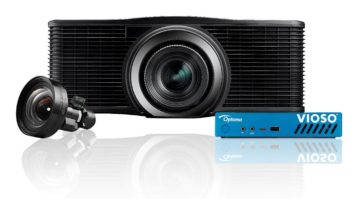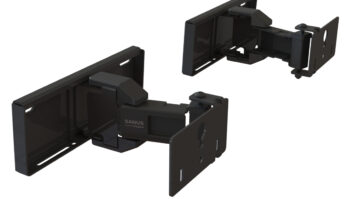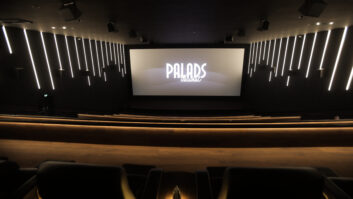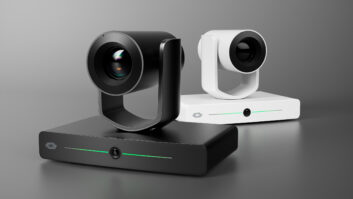In so many ways, the Pixar movie Brave turned out to be a game-changer – both for the animation studio itself and the movie industry as a whole. For a start, it saw the company rework its fundamental system for animation for the first time in 25 years. But arguably even more significantly it marked the debut outing for Dolby’s surround sound technology, Dolby Atmos.
It would have been understandable if the initial reaction to the technology was somewhat muted. After all, cinema – not to mention studio music recording and residential audio – had witnessed great excitement around previous surround sound technologies. For example, while formats such as 5.1 and 9.1 had been adopted enthusiastically in some areas, they had generally failed to translate their undoubted potential in global commercial and residential audio – something to which anyone who did invest in SACD and DVD-A playback equipment could attest.
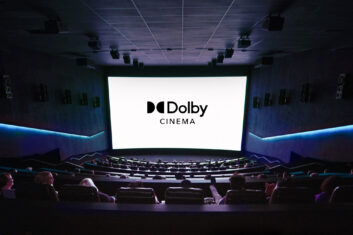 Ultimately, the long-term success of any entertainment format is determined by several primary factors: accessibility, price-point and, perhaps most crucially, content. There needs to be a significant and ever-growing reservoir of content on which both content services and consumers can draw. It’s no use launching a new format with great fanfare only to find a few years on that the stream of fresh releases has dried up.
Ultimately, the long-term success of any entertainment format is determined by several primary factors: accessibility, price-point and, perhaps most crucially, content. There needs to be a significant and ever-growing reservoir of content on which both content services and consumers can draw. It’s no use launching a new format with great fanfare only to find a few years on that the stream of fresh releases has dried up.
The fact that there is now so much content – and of so many types – being produced and issued in Dolby Atmos confirms that this format has safely circumvented that pitfall and continues to provide the basis for innovative new projects. And whilst this is down to a multitude of factors, the success of Dolby Atmos – which expands on existing surround systems by adding channels that allow sounds to be interpreted as three-dimensional objects with neither horizontal or vertical limitations – is undoubtedly a case of having the right technology at the right time.
PAIN POINTS
Recalling the development period that preceded the cinematic release of Brave, Mahesh Balakrishnan, vice president of consumer entertainment, Dolby Laboratories, tells Installation: “We spent a significant amount of time leading into this moment working with Hollywood creatives to better understand their pain points. It was clear from these early discussions that adding more audio channels (ie jumping from 5.1 to 7.1 and so on) wasn’t going to be enough. Creatives wanted to free of the restrictions of channel-based audio, which led us to the development of Dolby Atmos.”
Both separately and as part of Dolby Cinema – which also includes High Dynamic Range imaging technology Dolby Vision – Dolby Atmos’ growing eminence in cinema worldwide is no doubt. As of April 2023, there were more than 7,800 Dolby Atmos enabled cinema screens installed with or committed to supporting Dolby Atmos, although it’s likely that figure has grown substantially since then. Meanwhile, the technology is increasingly important to the audio mixing of deliverables for residential and commercial cinema.
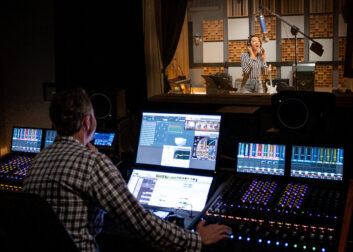 “Dolby Atmos played an integral role in [2023’s] biggest blockbuster films by powering the sound in Super Mario Bros., Barbie and Spider-Man: Across the Spider-Verse,” says Balakrishnan. “At home, you can find an extensive library of Dolby Atmos content on Apple TV+, Disney+, Max, Netflix, Prime Video, and other leading regional streaming services. This includes some of the most talked-about shows of 2023 like Ted Lasso, Ahsoka, The Last of Us and Drive to Survive – to name a few.”
“Dolby Atmos played an integral role in [2023’s] biggest blockbuster films by powering the sound in Super Mario Bros., Barbie and Spider-Man: Across the Spider-Verse,” says Balakrishnan. “At home, you can find an extensive library of Dolby Atmos content on Apple TV+, Disney+, Max, Netflix, Prime Video, and other leading regional streaming services. This includes some of the most talked-about shows of 2023 like Ted Lasso, Ahsoka, The Last of Us and Drive to Survive – to name a few.”
But even in the early post-launch period, it was evident that the technology had potential elsewhere, not least as “we quickly realised that these learnings and pain-points were felt more broadly.” Hence the subsequent – and very much ongoing – roll-out of Dolby Atmos to sectors including recorded and live music, exhibitions, theatre, gaming and automotive.
SMARTPHONE SURPRISE
Among the many notable aspects of the Dolby Atmos trajectory is the level of adoption that has occurred in home- and mobile-based listening. Again bucking the trend of previous surround sound formats, Dolby Atmos has proven to be really popular with both artists and audiences. Increasingly, new albums are being issued in both stereo and surround mixes (even multiple stereo mixes and a Dolby Atmos mix, as with Peter Gabriel’s recent I/O album!). Simultaneously, the reissuing of legacy catalogues – which remains a major contributor to music industry revenues – has been given a fresh lease of life with Dolby Atmos mixes of classic albums from Prince, Pink Floyd, the Beatles and many more. Meanwhile, Dolby Atmos is now available across 16 of the world’s leading global and regional music streaming services, including Apple Music, Amazon Music and TIDAL.
“One of the most surprising developments we’ve seen on our journey with Dolby Atmos is the role that smartphones now have in all our lives,” says Balakrishnan. “When we first launched Dolby Atmos, smartphones were still in their infancy in terms of playback capabilities for delivering high quality AV experiences. That’s no longer the case. In parallel, there has been an evolution in how certain generations consume content, particularly younger generations like Millennials and Gen-Z. For these generations, their phone is not just a secondary screen, it’s often their most used device for consuming content. Today, our phones are some of the most sophisticated and capable devices available for consuming entertainment – and many of those phones now come with Dolby Atmos.”
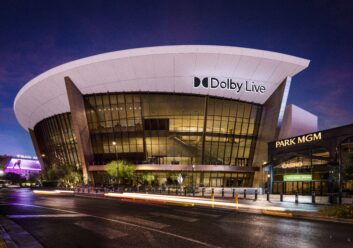
Meanwhile, Dolby Atmos has proven to be very popular with musicians and producers looking to transcend the limitations of stereo. “Even the most simple songs can have multiple layers – ranging from vocals to backing tracks, and everything in between. And when you listen to this song in stereo, you are condensing and forcing these very complex and intricate layers of instrumentation and vocals through two channels, which was not how the song was imagined in the studio. With Dolby Atmos, creatives are able to give music more space to ‘breathe’. And while artists continue to push the limits of what they can now do with music in Dolby Atmos – such as moving different elements of their mix in a three-dimensional space – the simplicity of giving music more space and freedom to breathe is often the number one reason artists tell us why they are excited about creating in Dolby Atmos.”
Live music has also been a cause of growing excitement, with initial highlights including the use of Dolby Atmos during several artists’ performances at the American Music Awards in 2019. Dolby has also unveiled Dolby Live – the first permanent venue of its kind to offer artist residencies and live concerts in Dolby Atmos – at Park MGM in Las Vegas, as well as partnering with artists on special ‘one night only events’, including Macklemore – who performed in Dolby Atmos at SXSW last year – and Imagine Dragons, who performed at Dolby Live during the timeframe of CES 2023.
EXPANDED PROFILE
With gaming and automotive among the other markets where the technology has also established a major footprint, Dolby Atmos continues to expand its profile. Meanwhile, the ecosystem of technologies that underpins it is also still growing – witness, for example, the August 2023 announcement of Dolby Atmos FlexConnect, which optimises the Dolby Atmos experience regardless of wireless speaker placement.
According to Balakrishnan, Dolby Atmos FlexConnect “solves a simple, but important, problem – where to place your speakers. Unlike our cars, most homes are not created equal, which poses a unique (but solvable) acoustic challenge. For example, some rooms are too small or too big to place speakers in their optimal position, while others have a unique layout that limits where devices can be placed, such as the location of power outlets or furniture arrangements. Many consumers also don’t want to trade aesthetic appeal for sound performance. And unless set up in the optimal positions, sound systems will assume the speakers are in their reference locations. This is where Dolby Atmos FlexConnect comes in to save the day”.

He says that the new solution solves two pain points for consumers. Firstly, it unlocks the ability to seamlessly pair together a TV’s sound system with accessory wireless speakers to create a more extensive and immersive Dolby Atmos experiences. Secondly, it also unlocks the freedom to place one more of these accessory wireless speakers anywhere in a room without having to worry about whether they are placed perfectly.
“It’s a major evolution for Dolby Atmos, and we are excited to work with our partners to innovate with how they bring together different device combinations and form factors to meet the needs of their consumers,” says Balakrishnan.
So if the first decade-plus has been highly eventful for Dolby Atmos, there is every sign that the next ten years will be similar – perhaps even more so. Above all, the large-scale adoption of Dolby Atmos for smartphones confirms that immersive audio is here to stay and on course to become every bit as embedded in our everyday lives as stereo.
